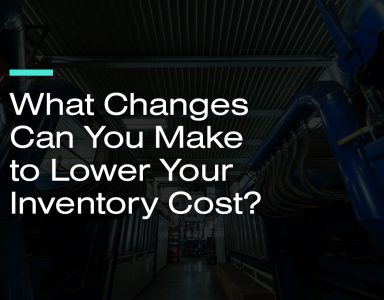At DemandCaster, we always testify that inventory is the ultimate measure of supply chain performance. Some days we will even say that inventory is the ultimate measure of business performance. We do not say this lightly. Right sized inventory and the continual management thereof means that your company also has:
- Good Demand Planning
- Good Manufacturing Planning
- Good Purchasing Planning & Supplier Relations
- Good relations & coordination between Sales & Sales Supply Chain
- A Finance & IT team that support the effort with sound, meaningful, and actionable reports and metrics
While the above list is indeed a wonderful list that any enterprise would love to have in place, it is not sufficient. What else is there?
There is the executive management team.
This group of executives are tasked with running the company and are rightfully focused on the need to optimize the P&L and the balance sheet. They need to do this given all the business and economic pressures such as:
- Weak sales relative to what has been projected to the street
- Quarter and year end peaking from years of training the customers that you will wheel and deal at the end of quarters to make numbers
- Balancing absorption vs. inventory
What was that last thing? Absorption, or absorption costing, is an external reporting requirement in the Generally Accepted Accounting Procedures (GAAP). In absorption costing, materials, direct labor, variable overhead and non-variable overhead are all part of the costing of a finished good. This actually makes a lot of sense. They are the natural and common sense components of product cost. Product sales price minus this cost determines the product profit margin. It is business 101.
The problem is when sales are below budget and expectations. The company can react in several ways. One way is simply produce less and avoid creating excess inventory. This is consistent with the lean principle of reacting to demand and letting demand drive the supply chain as much as possible. This is usually the path supply chain managers would prefer to follow (and what we promote). If your primary objective are inventory related, this is absolutely the option you would want.
At the executive level, the P&L rightfully takes the highest priority. In the same depressed sales scenario, they may make a “business” decision to run the factory to absorb the costs into a budgeted volume and maintain margins and profitability at the unit level. This equally valid path will result in higher inventory.
There is risk in running the factory solely for absorption. This practice only works if the sales can be made up in the next quarter or two. If sales continue to be weak, the absorption focus can be very addictive and will result in growing inventory. Often it results in the production being driven, the last few weeks of the quarter, and then after the close… pressuring the supply chain to make inventory objectives.
This practice is not healthy. It contributes to organization dysfunction and is hard to break until the next budget cycle. The unhealthy part is not getting everyone into lock step understanding why it is being done and relaxing other objectives that are adversely affected by the decision to run the factory.
- We are making a business decision to run the factory
- We are doing this to meet an absorption objective
- This action will result in higher inventory
- We are working hard to make up the sales in the next period to consume the extra inventory we are making this period.
- We are also looking at other methods to reduce inventory and reduce costs
This is prime example of the Law of Interdependency in our Supply Chain Physics Model. At DemandCaster we always testify that inventory is the final arbiter of business performance.
Have you ever been directed to increase inventory and later been chastised for allowing inventory to go up? We would love to hear your thoughts. We here at DemandCaster have experienced this in our past lives as supply chain and operations managers. Though it is not fair, it is the result of trying to satisfy two opposing objectives of management that are not in sync with one another.


